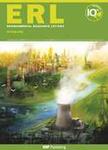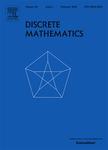版权所有:内蒙古大学图书馆 技术提供:维普资讯• 智图
内蒙古自治区呼和浩特市赛罕区大学西街235号 邮编: 010021
T=题名(书名、题名),A=作者(责任者),K=主题词,P=出版物名称,PU=出版社名称,O=机构(作者单位、学位授予单位、专利申请人),L=中图分类号,C=学科分类号,U=全部字段,Y=年(出版发行年、学位年度、标准发布年)
AND代表“并且”;OR代表“或者”;NOT代表“不包含”;(注意必须大写,运算符两边需空一格)
范例一:(K=图书馆学 OR K=情报学) AND A=范并思 AND Y=1982-2016
范例二:P=计算机应用与软件 AND (U=C++ OR U=Basic) NOT K=Visual AND Y=2011-2016


Flash droughts are rapid, short-term drought events that develop within weeks, driven by factors such as low rainfall, high temperatures, and strong winds, which deplete soil moisture and stress vegetation. These events have profound agricultural, economic, and ecological impacts, yet the use of machine learning to predict flash droughts remains underexplored, hindered by challenges like imbalanced datasets and limited data. This study addresses these issues by applying Convolutional neural networks (CNNs) to predict flash droughts in Eastern Australia, a region prone to such events. We identified flash droughts from 2001 to 2022, training the model with data from 2001–2015, validating it on 2016–2017 data, and testing it on 2018–2022 data. The model's performance was evaluated across drought duration, spatial distribution, and seasonal variability. Achieving a balanced accuracy of 80% and an Area under the curve of 93%, the CNN demonstrated strong predictive capability. However, it tended to overestimate the spatial extent of droughts, indicating areas for future improvement. These results highlight the potential of deep learning in flash drought prediction, offering valuable insights for early warning systems and drought management strategies.

电话和邮箱必须正确填写,我们会与您联系确认。
版权所有:内蒙古大学图书馆 技术提供:维普资讯• 智图
内蒙古自治区呼和浩特市赛罕区大学西街235号 邮编: 010021

暂无评论